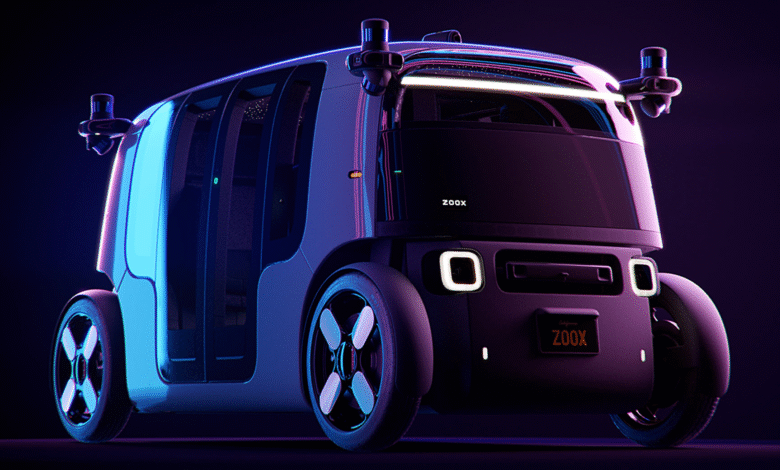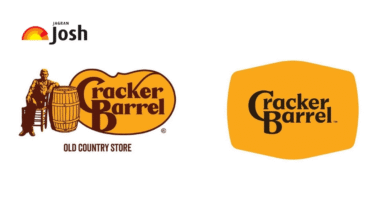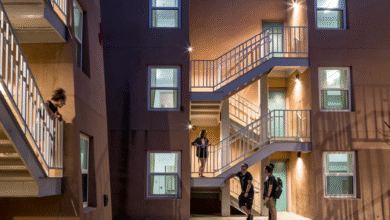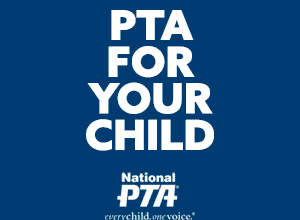Zoox Robotaxi Overcomes Regulatory Hurdles for Testing

Amazon’s Zoox robotaxi is set to revolutionize urban transportation as it navigates through a significant regulatory milestone. With the National Highway Traffic Safety Administration (NHTSA) granting an exemption from certain federal regulations, Zoox can now showcase its innovative self-driving car technology on public roads. This landmark approval not only highlights the advancements in autonomous vehicles but also positions Zoox as a frontrunner in robotaxi testing. The NHTSA’s decision paves the way for greater operational flexibility, allowing Zoox to focus on its goal of launching a fleet of autonomous vehicle services. As Zoox gears up for commercialization, the implications for the future of ride-hailing services seem brighter than ever.
The Zoox robotaxi represents a groundbreaking step towards fully autonomous transportation solutions. With its unique design and self-driving capabilities, this electric vehicle is changing the landscape of urban mobility. Recently, the National Highway Traffic Safety Administration authorized a new exemption for Zoox, allowing it to advance in the realm of robotic taxi services. As regulations adapt to support innovations in autonomous vehicles, Zoox is preparing to lead the charge in providing an efficient alternative to traditional ride-hailing. As the journey unfolds, the future of personal transportation could be reshaped profoundly by companies like Amazon Zoox.
The Significance of Zoox’s NHTSA Exemption
Amazon’s Zoox robotaxi unit has recently cleared a pivotal regulatory hurdle by receiving an exemption from certain National Highway Traffic Safety Administration (NHTSA) requirements. This exemption is a landmark development for self-driving car manufacturers in the U.S., as it allows Zoox to begin demonstrations of its autonomous vehicles, paving the way for future innovations in robotaxi technology. The NHTSA’s decision reflects a growing recognition of the importance of regulatory flexibility in the rapidly evolving landscape of autonomous vehicle development.
The NHTSA exemption is expected to accelerate the pace of robotaxi testing and operational deployment across the country. The agency’s chief counsel emphasized the swift review process for innovators like Zoox, which could catalyze advancements in the self-driving car sector. This move aligns well with Zoox’s ambitions to demonstrate its uniquely designed vehicles, which lack traditional driving controls, thereby positioning the company at the forefront of the autonomous vehicle movement.
Zoox Robotaxi: A New Era of Transportation
The Zoox robotaxi is not just another player in the autonomous vehicle market; it represents a revolutionary leap in how people will interact with transportation. Designed exclusively for ride-sharing, these self-driving robots are eliminating the need for steering wheels and pedals, creating a new user experience where passengers can enjoy a fully autonomous ride. As Amazon accelerates its investment in this technology, Zoox is preparing for commercial operations, especially with Las Vegas set to be its initial launch market.
This shift towards automated transport solutions exemplifies the future of urban mobility, where robotaxis could alleviate traffic congestion and reduce emissions. As Zoox gears up to launch its fleet, the company highlights its commitment to safety and compliance, despite reliance on an NHTSA exemption to navigate initial regulatory limitations. The broader implications for urban infrastructure and ride-hailing services are profound, as more companies, influenced by Zoox’s trials, may seek to implement their own autonomous vehicle solutions.
Regulatory Changes for Autonomous Vehicles
The relaxation of regulations concerning autonomous vehicles is a significant trend benefitting innovators like Zoox. The NHTSA’s recent actions to streamline the exemption process for self-driving cars suggest a move towards more accommodating policies for domestic manufacturers. This change is particularly vital in a market otherwise dominated by foreign imports and is critical for fostering local innovation. Companies like Tesla are already eyeing this regulatory shift to expand their own autonomous offerings, such as the planned CyberCab.
As the Department of Transportation broadens its programs, we may see a new wave of self-driving vehicle testing on public roads, potentially transforming urban landscapes. The ongoing changes may also necessitate updated frameworks for federal motor vehicle safety standards as more companies enter the robotaxi domain. This regulatory evolution positions Zoox advantageously, allowing it to not only comply with emerging standards but also set a precedent for other autonomous vehicle developers.
The Future of Zoox and its Market Expansion
With a manufacturing facility launched in the San Francisco Bay Area, Zoox aims to ramp up production of its distinctive robotaxi, targeting an annual output of 10,000 vehicles. This strategic expansion is crucial as Zoox prepares to capture market share in the burgeoning field of autonomous ride-hailing services. Amidst intensifying competition from established players like Tesla, Zoox’s unique approach to vehicle design and regulatory navigation may enable it to carve out a significant niche in the marketplace.
The identified focus on Las Vegas as Zoox’s initial commercial market indicates a calculated strategy to capitalize on high tourism and urban density, which are ideal for ride-hailing operations. As the company prepares to initiate operations later this year, the excitement surrounding its self-driving robotaxis signifies a new chapter in urban mobility, potentially leading to increased consumer adoption of autonomous transportation solutions.
Innovative Designs and Technology Behind Zoox Robotaxis
The design of the Zoox robotaxi is pivotal to its functionality and appeal. Characterized by its unique, compact shape, reminiscent of a toaster, the vehicle is built specifically for ride-hailing services without conventional driving features. This innovative design philosophy emphasizes passenger comfort and space, setting Zoox apart in the self-driving car landscape. With a focus on creating environments conducive to social interaction, Zoox has ensured its robotaxi encourages a new mode of travel that is both efficient and user-friendly.
Beyond aesthetics, the technology embedded within the Zoox robotaxi is groundbreaking. With advanced sensors and AI capabilities, these autonomous vehicles can navigate complex urban environments safely. Such technology is vital for meeting the safety standards set forth by regulatory bodies like the NHTSA, especially as Zoox looks to expand on its recent exemption. As they refine their self-driving algorithms and safety protocols, Zoox sets a high bar for future autonomous vehicle developments.
Challenges Faced by Zoox and the Autonomous Vehicle Market
While Zoox celebrates its recent regulatory success, the path forward is filled with challenges inherent in the autonomous vehicle arena. The complexities of regulatory compliance, coupled with public perception of self-driving cars, poses a constant hurdle. Overcoming skepticism regarding safety and efficiency will be crucial for Zoox as it launches its robotaxi services. The company must engage with potential riders and promote confidence in its technology to ensure a successful market entry.
Moreover, Zoox faces the competitive pressures of the rapidly evolving autonomous vehicle landscape. With industry giants like Tesla pushing aggressively into the market, the company must continually innovate and adapt to maintain its competitive edge. Ensuring consistent vehicle production and reliable safety records will be essential for sustaining consumer trust and interest. This vigilance in overcoming challenges will determine Zoox’s success in establishing itself as a leader in the robotaxi sector.
The Role of Zoox in the Sustainable Transportation Revolution
Zoox’s entry into the autonomous vehicle market aligns perfectly with the growing demand for sustainable transportation solutions. As environmental concerns rise, the design of electric robotaxis plays a critical role in reducing carbon footprints in urban settings. Zoox’s approach allows for a complete rethinking of transportation, with electric, self-driving vehicles that promise to minimize emissions while providing optimally efficient ride-sharing solutions.
By prioritizing sustainability in its robotaxi design, Zoox is not only contributing to green transport initiatives but is also setting industry standards for future development. The potential for widespread adoption of electric robotaxi services presents an opportunity to reshape urban mobility, encouraging fewer personal vehicle purchases and promoting shared transportation as a greener alternative. This eco-friendly focus continues to resonate with consumers, further promoting the transition to autonomous solutions.
Zoox’s Vision for Urban Mobility
Zoox’s ultimate vision extends beyond mere technological advancements; it envisions a complete transformation in urban mobility. By introducing self-driving robotaxis, Zoox aims to create a dynamic, efficient transportation ecosystem that integrates seamlessly with existing urban infrastructures. The implications of such a vision could lead to reduced traffic congestion and enhanced accessibility to public services for all urban residents.
With ambitious plans for metropolitan expansion, Zoox’s innovative solutions could redefine standards for how cities approach transportation. The emphasis on autonomous services can provide insights into the future of not just ride-hailing but also public transportation systems. By promoting vehicle-sharing over personal ownership, Zoox contributes to a movement that prioritizes integrated urban planning and sustainability, making cities more livable and accessible for everyone.
Impacts of Zoox’s Growth on the Autonomous Vehicle Ecosystem
As Zoox prepares for its upcoming launch of robotaxi services, its growth trajectory will undoubtedly influence the broader autonomous vehicle ecosystem. The company’s innovative approach and successful regulatory navigation may serve as a benchmark for other startups and established companies in the field. By demonstrating the practical viability of self-driving technology, Zoox could encourage further investment and interest in autonomous solutions from both the public and private sectors.
Furthermore, the operational insights gained from Zoox’s trial phases will provide invaluable data to optimize future developments in autonomous vehicles and policies. The outcomes of Zoox’s real-world applications can inform regulators, consumers, and competitors alike, promoting a collaborative environment where safety standards and technological innovations are continually refined. Ultimately, Zoox’s contributions could accelerate advancements across the autonomous vehicle sector, fostering an environment ripe for innovation.
Frequently Asked Questions
What is Zoox robotaxi and how does it relate to autonomous vehicles?
Zoox robotaxi is an innovative self-driving car created by Amazon’s Zoox unit. It is designed as an autonomous vehicle that can operate without a driver, aiming to enhance urban transportation with its robotaxi service.
How has Zoox robotaxi achieved regulatory approval for self-driving features?
Zoox robotaxi has recently received an exemption from the National Highway Traffic Safety Administration (NHTSA) for certain federal safety requirements, marking a significant milestone for its autonomous vehicle testing in the U.S.
What does the NHTSA exemption mean for Zoox robotaxi testing?
The NHTSA exemption allows Zoox to conduct extensive robotaxi testing without the usual federal motor vehicle safety standards, facilitating faster development and deployment of its self-driving cars under a new program for U.S.-built vehicles.
When will Zoox robotaxi begin commercial operations?
Zoox plans to launch its commercial robotaxi service in Las Vegas later this year, marking its entry into the market for autonomous vehicle ride-hailing services.
What are the features of the Zoox robotaxi that distinguish it from traditional cars?
The Zoox robotaxi features a unique toaster-shaped design without a steering wheel or pedals, allowing it to operate as a fully autonomous vehicle, enhancing passenger experience through a spacious interior.
How many robotaxis does Zoox plan to produce annually?
Zoox aims to manufacture up to 10,000 robotaxis per year once its new facility in the San Francisco Bay Area reaches full operational capacity.
What impact will the expansion of the Automated Vehicle Exemption Program have on companies like Zoox?
The expansion of the Automated Vehicle Exemption Program will enable companies like Zoox, along with others such as Tesla, to expedite testing and operational approval for their autonomous vehicles in public areas, fostering innovation in self-driving technology.
What is the significance of Amazon’s acquisition of Zoox in the context of robotaxi development?
Amazon’s acquisition of Zoox for $1.3 billion in 2020 has positioned the company as a leader in autonomous vehicle technology, fueling its ambition to revolutionize urban transportation through robotaxi services.
How does Zoox’s approach to robotaxi differ from competitors in the autonomous vehicle market?
Zoox’s approach includes designing robotaxis specifically for ride-hailing, with a focus on safety, efficiency, and passenger comfort, distinguishing it from competitors who may retrofit existing vehicles.
What challenges does Zoox robotaxi face in the market?
Zoox robotaxi faces challenges such as ensuring public safety, navigating regulatory landscapes, and competing with established players in the autonomous vehicle market while scaling its manufacturing capabilities.
| Key Point | Details |
|---|---|
| Regulatory Approval | Zoox received an exemption from certain NHTSA requirements, allowing it to demonstrate its self-driving robotaxis. |
| NHTSA’s Statement | NHTSA announced swift reviews for innovative transportation vehicles, indicating progress in regulatory frameworks. |
| Self-Certification Investigation | NHTSA concluded an ongoing investigation into Zoox’s self-certification of meeting federal safety standards. |
| Future Prospects | Zoox plans to grow its manufacturing capacity, aiming for 10,000 vehicle production annually to support its ride-hailing service. |
| Commercial Deployment | Las Vegas is targeted as the initial market for Zoox’s commercial ride-hailing services to begin later this year. |
Summary
The Zoox robotaxi has made significant strides in overcoming regulatory hurdles, paving the way for its deployment in the evolving autonomous vehicle market. With the recently granted exemption from the NHTSA, Zoox is on a fast track towards demonstrating its robotaxi capabilities and establishing itself in the commercial ride-hailing sector, particularly in Las Vegas. As the regulatory landscape becomes more favorable for innovation, the future looks promising for Zoox and its plans to scale production in the coming years.




